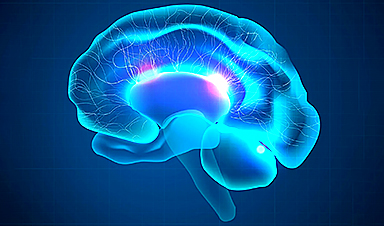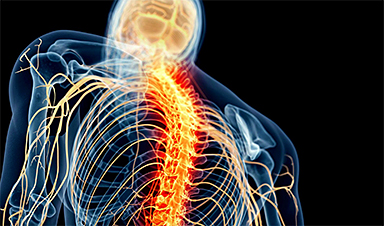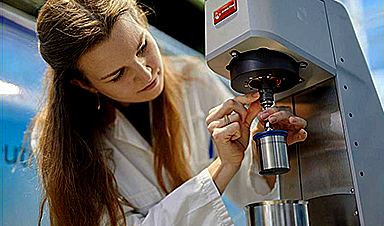One in four people has a mental disorder, according to the World Health Organization. If you’re lucky enough to live in a wealthy country, treatment will usually involve some form of medication—which can cause more issues than it fixes.
The reason for that lies in the depths and complexities of the human mind. It is made up of a maze of pathways that connect the different parts of the brain. They are in turn governed by chemicals that dictate our thoughts, emotions and actions. When a person has psychiatric disorders such as depression, anxiety or addiction, this intricate landscape is often clouded in shadow.
Medicating as a form of treatment touches every part of that complex system, the areas you want to treat and everywhere else besides. However, research is uncovering a light at the end of this metaphorical tunnel—a technique that uses ultrasound to change how the brain behaves.
When people hear the term ultrasound, they probably think of the scans used to monitor the early development of babies in the womb. In that context, it works by emitting gentle waves of sound, and when they bounce off different parts of the body, they create “echoes” that are turned into a moving image.
The notion of using the same methods to modulate brain activity might sound like something out of a sci-fi novel. But it is grounded in solid scientific principles.
Focused ultrasound involves the targeted delivery of sound waves to specific regions of the brain, where they can influence brain activity. And unlike other forms of brain stimulation, such as transcranial magnetic stimulation or deep-brain stimulation, the use of transcranial ultrasound stimulation (TUS) offers several distinct advantages.
For starters, it is non-invasive, meaning there’s no need for surgery or implantation of electrodes. The ultrasound machine is simply positioned onto the hair with gel and delivers ultrasound.
This not only reduces the risk associated with invasive procedures, but also makes it more accessible to a wider range of patients.
Also, focused ultrasound can precisely target deep brain structures with unprecedented accuracy, allowing for personalized interventions that address the root causes of brain disorders, whether neurological, like essential tremor or psychiatric, like addiction.
This level of precision holds the promise of personalized medicine, where treatments can be tailored to individual patients based on their unique brain organization and symptoms.
Vast and varied
The potential applications of focused ultrasound in treating brain disorders are vast and varied. Notably, one of the most remarkable findings is its ability to reduce tremors in individuals with essential tremor by targeting the deep brain regions responsible for excessive movement.
In depression, researchers have also explored its ability to change the activity in the dorsolateral prefrontal cortex—a region of the brain that has been implicated in mood regulation. By gently nudging this area with ultrasound waves, scientists hope to alleviate symptoms of depression and restore balance to the brain’s emotional circuitry.
Similarly, TUS shows promise in anxiety disorders, where aberrant activity in the amygdala—an almond-shaped structure involved in fear and stress responses—can contribute to pathological anxiety. By precisely targeting the amygdala, researchers aim to dial down its hyperactivity, offering relief to those plagued by incessant worry and dread.
Even more complex conditions like addiction, characterized by disruptions in reward sensitivity, cognition and social functioning, may benefit from TUS interventions. Some UK research teams are currently working on a trial looking at its potential to address alcohol addiction. By modulating activity in brain regions associated with reward, the hope is to mitigate the debilitating effects of the disorder and improve patients’ quality of life.
The complexity of psychiatric disorders poses another significant hurdle, and imagining this as a one-size-fits-all solution is perhaps fanciful. But this is a field where treatment options are limited and outcomes vary widely. Against that, the prospect of precise brain interventions that target the root causes of psychiatric disorders could revolutionize psychiatric care and offer hope to millions around the globe.
As the mysteries of the brain are continuously refined and technology can allow us to reach its deeper parts, there is hope that we will find ourselves on the brink of a new era in mental health care, where the shadows of psychiatric disorders are illuminated by the healing power of sound.
This article is republished from The Conversation under a Creative Commons license. Read the original article.
News
The Silent Battle Within: How Your Organs Choose Between Mom and Dad’s Genes
Research reveals that selective expression of maternal or paternal X chromosomes varies by organ, driven by cellular competition. A new study published today (July 26) in Nature Genetics by the Lymphoid Development Group at the MRC [...]
Study identifies genes increasing risk of severe COVID-19
Whether or not a person becomes seriously ill with COVID-19 depends, among other things, on genetic factors. With this in mind, researchers from the University Hospital Bonn (UKB) and the University of Bonn, in [...]
Small regions of the brain can take micro-naps while the rest of the brain is awake and vice versa
Sleep and wake: They're totally distinct states of being that define the boundaries of our daily lives. For years, scientists have measured the difference between these instinctual brain processes by observing brain waves, with [...]
Redefining Consciousness: Small Regions of the Brain Can Take Micro-Naps While the Rest of the Brain Is Awake
The study broadly reveals how fast brain waves, previously overlooked, establish fundamental patterns of sleep and wakefulness. Scientists have developed a new method to analyze sleep and wake states by detecting ultra-fast neuronal activity [...]
AI Reveals Health Secrets Through Facial Temperature Mapping
Researchers have found that different facial temperatures correlate with chronic illnesses like diabetes and high blood pressure, and these can be detected using AI with thermal cameras. They highlight the potential of this technology [...]
Breakthrough in aging research: Blocking IL-11 extends lifespan and improves health in mice
In a recent study published in the journal Nature, a team of researchers used murine models and various pharmacological and genetic approaches to examine whether pro-inflammatory signaling involving interleukin (IL)-11, which activates signaling molecules such [...]
Promise for a universal influenza vaccine: Scientists validate theory using 1918 flu virus
New research led by Oregon Health & Science University reveals a promising approach to developing a universal influenza vaccine—a so-called "one and done" vaccine that confers lifetime immunity against an evolving virus. The study, [...]
New Projects Aim To Pioneer the Future of Neuroscience
One study will investigate the alterations in brain activity at the cellular level caused by psilocybin, the psychoactive substance found in “magic mushrooms.” How do neurons respond to the effects of magic mushrooms? What [...]
Decoding the Decline: Scientific Insights Into Long COVID’s Retreat
Research indicates a significant reduction in long COVID risk, largely due to vaccination and the virus’s evolution. The study analyzes data from over 441,000 veterans, showing lower rates of long COVID among vaccinated individuals compared [...]
Silicon Transformed: A Breakthrough in Laser Nanofabrication
A new method enables precise nanofabrication inside silicon using spatial light modulation and laser pulses, creating advanced nanostructures for potential use in electronics and photonics. Silicon, the cornerstone of modern electronics, photovoltaics, and photonics, [...]
Caught in the actinium: New research could help design better cancer treatments
The element actinium was first discovered at the turn of the 20th century, but even now, nearly 125 years later, researchers still don't have a good grasp on the metal's chemistry. That's because actinium [...]
Innovative Light-Controlled Drugs Could Revolutionize Neuropathic Pain Treatment
A team of researchers from the Institute for Bioengineering of Catalonia (IBEC) has developed light-activated derivatives of the anti-epileptic drug carbamazepine to treat neuropathic pain. Light can be harnessed to target drugs to specific [...]
Green Gold: Turning E-Waste Into a Treasure Trove of Rare Earth Metals
Scientists are developing a process inspired by nature that efficiently recovers europium from old fluorescent lamps. The approach could lead to the long-awaited recycling of rare earth metals. A small molecule that naturally serves [...]
Cambridge Study: AI Chatbots Have an “Empathy Gap,” and It Could Be Dangerous
A new study suggests a framework for “Child Safe AI” in response to recent incidents showing that many children perceive chatbots as quasi-human and reliable. A study has indicated that AI chatbots often exhibit [...]
Nanoparticle-based delivery system could offer treatment for diabetics with rare insulin allergy
Up to 3% of people with diabetes have an allergic reaction to insulin. A team at Forschungszentrum Jülich has now studied a method that could be used to deliver the active substance into the [...]
Nanorobot kills cancer cells in mice with hidden weapon
Researchers at Karolinska Institutet in Sweden have developed nanorobots that kill cancer cells in mice. The robot's weapon is hidden in a nanostructure and is exposed only in the tumor microenvironment, sparing healthy cells. [...]




















